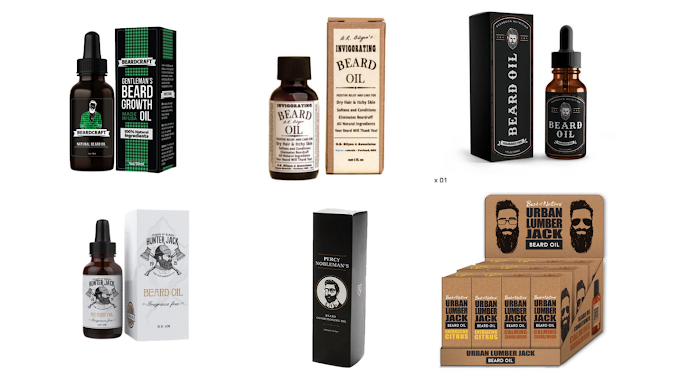5 Trends in Food Packaging: From Sustainable to Designer, and How It Affects Your Business
Many wonder how food packaging is designed. The brands help the companies in deciding the package. Many of us have no idea how big the impact our food packaging can be on the environment. As the food industry evolves, businesses should be aware of what changes are happening and explore these new options. There are fast-food chains selling food, and also consumers take away. The delivery system is efficient. In this fast-paced life, the burger boxes help a lot of consumers in their daily lives.
The future is looking bright for makers in the food industry! There's a lot to look forward to as we enter the end, including eco-friendly packaging and healthier alternatives that could potentially change your business forever. This article gives you an overview of what food trends are on the horizon, how they affect your business, and some simple steps to reduce the effects.
Trends in food packaging
The cardboard packaging, along with the plastic packaging, is becoming more important in the food industry. Trends that are making their way into the food packaging industry include:
1) natural packaging,
2) recyclability of packaging, and
3) transparency of packaging.
Some food brands are making their packaging look better by using natural materials. This is great for bottled water and condiments because many millennials want labels that reflect their health practices. However, some people say that these alternatives may be bad for the environment. Still, other food marketers say they have advantages and return to using them as packaging, which is difficult for retailers who need to replace them. A minimum number of consumers want transparency in their food packaging. Many people still want to know how their foods are made, which is the motivation behind this trend.
Packaging is now more transparent and with many labels. It can be made of different materials like plant-based. Plant-based packaging will help the environment because it won't make landfills worse. Your business can adapt by offering more plant-based food options, too!
NATURAL PACKAGING
The main reasons why we need petroleum-based packaging is either because it lasts longer or does not leach chemicals. Plastic water bottles last a long time and don't leak chemicals into the drink inside them. Glass containers can break easily and require more replacements.
First, these products are necessary for the transportation industry because they provide food and drink barriers. Second, these products get manufactured, as they do not degrade when exposed to oxygen or light. Because of that, it is in our best interest to make sure these products remain usable and portable for the next several decades.
On the other hand, natural packaging relies on building relationships with trees to get the nutrients to grow vegetables. It is really essential for the environment. We pack the food we produce so that we can share them with others.
Sustainable packaging
One of the most important things when it comes to product packaging is that it's sustainable. You should make sure that your packaging materials aren't harmful to the environment because those will be around for a long time. Also, you should make sure that your packaging is cost-effective and that it's easy to open and re-close. That's why it is so essential for us all to keep recycling!!
Some products are changing a lot. They get in market with huge expectation to sell well when they come back with new eco-friendly packaging.
Welfare foods packaging
This one isn't a food trend per se, but it is a focus area for many, making it into a subset of so-called trend topics. Veganism has gained more traction over the past decade, and companies have started to see an opportunity where some governments are banning certain foods and packaging.
By slowing down the consumption of the things causing the increase in grieving and reducing the buying of animal products where necessary, you are creating a trend. Frequently you'd see COVID-19 related foods trending, but soon after, there will be whatever it is that eliminates discomfort for people.
Brands can't just throw any green into a product and expect it to trend. Only a small percentage of products will make it big in the supermarket. Companies need to focus on adding excitement to the green world by only using ingredients that inspire awe or wonder, as they have done with products.
Designer packaging
Your packaging should be as good as your product. One of the most important things to remember when designing packaging is to think about how you will market the product. When it comes to kraft packaging wholesale, you have two options: tell the consumer what you give them or include information that customers will see as an added benefit, potentially drawing them deeper into your brand. A packaging designer creates the images and designs that will be used for a product's package. The package can be a label, a box, or any other container where products get marketed. Consumers look at more single-use items such as plastic drinking straws or cutlery rather than expensive purchases they want to consume on the go; having well-designed packaging can help build brand loyalty.
Conclusion
Business owners need to consider the environmental impact of their packaging. There are a few things you can do such as:
- Reduce the amount of bad packaging you use
- Sell products in bulk with minimal or no wrapping
The fast-food industry is using a huge amount of resources to produce its packaging. This includes energy, water, chemicals, and minerals, among many other things used for the process. Manufacturing often leaves behind air emissions like greenhouse gases, heavy metals and particles, and wastewater sludge containing toxic contaminants. As each item goes into its own foamed plastic container made out of polystyrene foam, it will not be biodegradable. Trash can easily get picked up by the wind and sent all over our environment. This leaves trash in many places, which can make us sick or even kill us when there are toxins from these materials in our environment that cause cancer.










